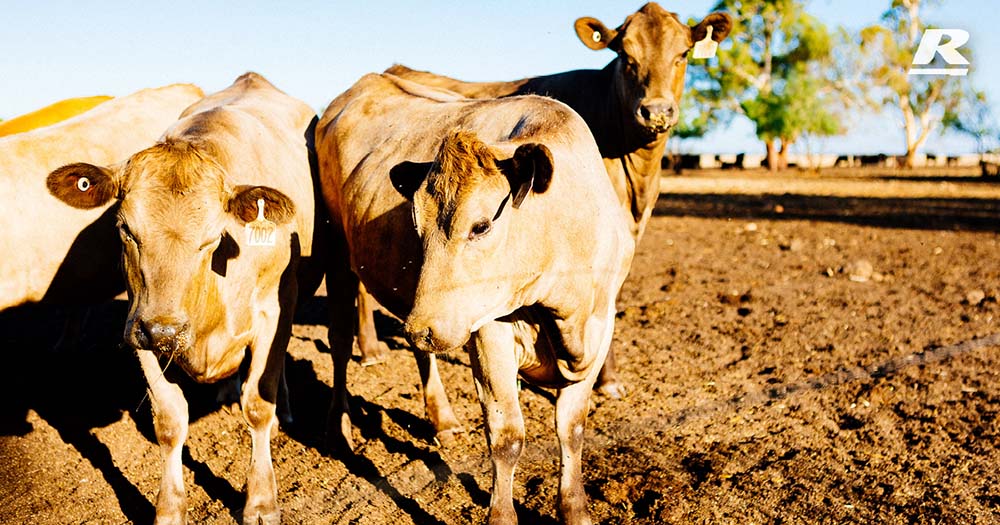Heat Stress Management in Dairy Cows
With the calendar suggesting summer is already upon us, here are some heat management strategies that can be implemented to look after your cows and minimise production losses during periods of sudden heat when they occur.
Heat stress is not necessarily a challenge that is designated just to the summer months, in fact at higher humidity levels Heat Stress can start to impact your milk production levels from as low as 22°C . Heat stress in Australia, can be as mild as unexplained production losses across the herd, to more extreme versions of high respiration rates, panting, and visible distress. With the increased rainfalls around the state, expect to see higher humidity levels across the summer periods & stress on your dairy animals potentially raise its head earlier than would be traditionally expected. With milk prices between $9 – 10 for many, proactively managing production over any stress periods will add value to your bottom line.
Provide plenty of shade and water
Shade is a very effective way to reduce heat as it blocks the solar radiation and reduce the radiant heat load by 50% or more. Make sure cows have access to paddock with plenty of shade and fresh, good quality water is always available. This may involve sending the cows to a paddocks to graze early in the morning and then allowing them to move freely to a shaded area during the heat of the day, however walking should be kept to a minimum where possible to minimise energy losses.
Make sure…
- Shaded areas are well managed, as manure build ups & rain effected areas can be havens for mastitis across the warmer months.
- Water troughs have enough capacity to allow multiple cows to drink at once and that the water volume & pressure can keep up with the herd’s consumption rate. An average sized cow can drink anywhere between 170-200L/ day or more during periods of extreme heat.
- You have 3+ days of fresh, good quality water on hand at all times, in case power failures or shortage’s occur. Ideally cows should have good access to a water point on exit from the dairy, after consuming dry concentrates. Consider running a water quality sample on your planned water sources to make sure there are no factors that will limit uptake or palatability, your Reids representative can assist you with this task.
Water cooling
When cows are hot, the best way to eliminate heat is through the use of sprinklers for evaporation as they have the ability to dissipate 2200 BTU (British thermal unit) of heat for every 1L of water that evaporates from the skin of a cows body (Zulovich, 2018). Medium to coarse sized droplets should be distributed and should soak the whole area of the cow yard. Sprinklers should be used during both milkings. Cooling the cows during the morning milking will help keep their body temperature lower during the day for longer, allowing them to graze for a longer period of time after the morning milking. During the afternoon/evening milking, sprinklers will allow the evaporation process to occur and reduce the cows overall body temperature that has been elevated through the course of the days from exposure to heat.
Dairy Australia recommends that the following sprinkler cycle should be set up to cool cows most effectively in the yard; 1.2L water/m2 for 3 minutes on and then 12 minutes off. Keeping cows cooler in the evenings will allow them to expel as much of the core heat as they can & set about getting back to consuming feed.
Increase quality of feed
As heat stress starts to impact a herd, reductions in milk production & protein tests will typically show the early signs that your herd is under pressure. These factors also generally correlate to the cow feed quality & feed intakes in the days previous. To minimise production losses, make sure high quality feeds are on offer to the cows. By feeding high quality Stock feeds near you and managing NDF levels, we can increase the energy density of the diet, allowing the cow to get more energy and grams of protein from every mouthful she consumes. Utilising slower digesting starch sources & good quality protein sources will result in better quality amino acid sources which will have a positive impact.
Along with intake reductions, the cows will utilise more energy through panting and cooling herself that her requirements can increase by 20-30%. The use of additives such as betaine, yeast or yeast by products, salt and additional buffering in your RSF rations can also be of benefit during these stress periods.
Cows have an opportunity within 24 hours of a heat event to catch up on her DMI, allowing her to overcome shortages from the previous day. Should extra quality feed not be available at the next feeding, her intakes will be effected. Which means the production loss will likely occur. Production losses that are not proactively managed during heat stress times, can quickly become permanent if not addressed.
Reduce & Alter walking distances
- Try to situate cows in paddocks near the dairy to minimise walking distances, which will in turn reduce stress levels and prevent extra energy losses. This may involve the use of a sacrifice paddock and feed of a high quality being brought to the cows to eat.
- Try moving your milking times forward in the morning so that cows have longer to graze/eat prior to the heat setting in. Push the afternoon/evening milking time back so that the cows can be left in the paddock with the shade and not standing in the yard during one of the hottest parts of the day.
